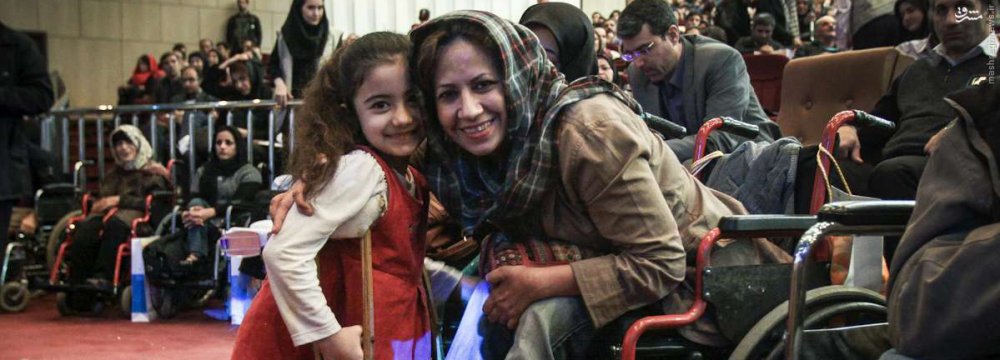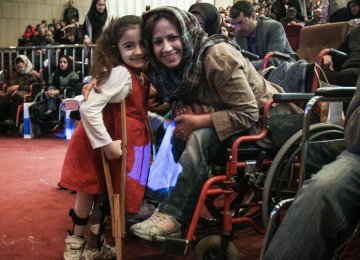As per law, all state and public organizations are obliged to hire at least 3% of their personnel from among the disabled -- a tall order far from realization. The excuse by state and affiliated bodies is that the existing legal instruments are vague and impractical.
One key shortcoming is the lack of reliable data on the number of the disabled. The national census last year makes no mention of the disabled. However, based on the earlier census conducted in March 2011-12, the number of disabled was put at one million -- 1.33% of the total population, Salamatnews reported.
Another disputable issue is the lack of a clear definition for disability. Like most countries, Iran wrestles with the challenge of defining disability that entails eligibility for rights and benefits. The State Welfare Organization (SWO) is a government body that provides welfare to those who are eligible. The SWO defines only four types of disabilities: physical, hearing, visual, and mental.
Critics of the existing law argue that allocating a fixed 3% quota for employing the disabled in every state and public organization is not realistic because some jobs are intrinsically unsuitable for the disabled while others attract more physically challenged applicants.
Hoping to remove the legal barriers to employing people with disabilities, the Parliament is working on amendments to the Law on the Protection of the Rights of the Disabled. The bill is in the 290-member chamber and Homayun Hashemi, a parliament member overlooking the process, said on Monday that the revisions are in the final phase.
Barriers for Teaching Jobs
The disabled seeking a teaching job recently found themselves up against a wall of new and bizarre conditions.
New stringent guidelines for the selection process of two famous teacher-training universities made headlines last month. The rules, which specified the criteria for selection of students wanting to join Farhangian and Shahid Rajaee teacher-training universities, required strict medical and fitness tests that could render many applicants unfit.
These, among other things, included having no medical history of kidney, urinary tract or heart disease, no gynecological complications for women, no speech impediment, having not less than 20 teeth and a minimum height of 160 for men and 155 for women.
Strong reaction in the social media and the press forced those in charge to reconsider the guidelines and ease some conditions. Esfandiar Charband, an Education Ministry official, told the reformist newspaper E’temad that the revised guidelines, to be announced by the ministry next week, has eased some of the conditions.
But even if the conditions for admitting the disabled into teacher-training programs are eased, there is no guarantee that they will find decent employment in the education system. Achieving the 3% employment target for the disabled population in schools will have to wait in the foreseeable future.






Add new comment
Read our comment policy before posting your viewpoints